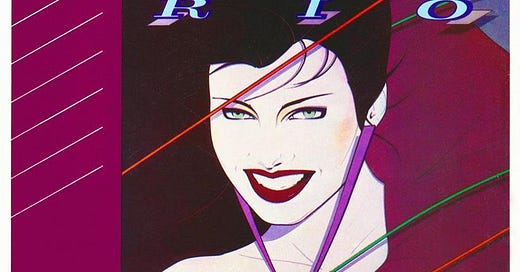And the droning engine throbs in time with your beating heart
Duran Duran - 'The Chauffeur' (Rio - 1982)
Duran Duran’s second album Rio was the album that put the Birmingham quartet on the map. Their previous record, Duran Duran, contained a favourite late-night video of a fledgling MTV in ‘Girls on Film’, but only really saw success in the wake of Rio going supernova. The band’s follow-up contained big hits on both sides of the Atlantic, such as ‘Hungry L…
Keep reading with a 7-day free trial
Subscribe to The Run Out Grooves to keep reading this post and get 7 days of free access to the full post archives.




